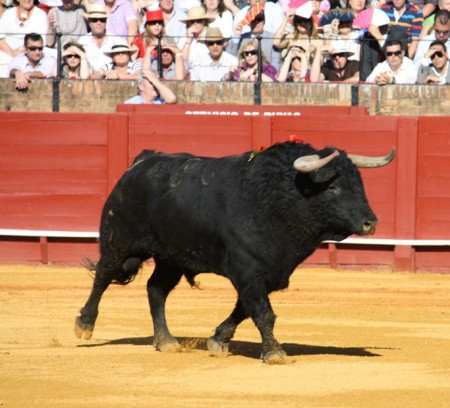Type the name of the breed you're looking for below
[wpdreams_ajaxsearchlite] Don't see the breed your're looking for? Click here and let us know!
Spanish Fighting Bull
| Place of Origin | Spain, Portugal, and Andorra |
| Origin | Some commentators trace the origins of the fighting bull to wild bulls from the Iberian Peninsula and their use for arena games in the Roman Empire. Although the actual origins are disputed, genetic studies have indicated that the breeding stock have an unusually old genetic pool and an unusual amount of DNA usually found in cattle in Africa, perhaps coming from the Maghreb and dating from the period of Moorish occupation of Spain. The aggression of the bull has been maintained (or augmented, see above) by selective breeding and has come to be popular among the people of Spain, France and Portugal for the purpose of bullfighting. It was later introduced to Latin America by the Spanish settlers who wished to hold bullfights in their colonies. In May 2010, Spanish scientists cloned the first of the breed. The calf, named Got, meaning "glass" in Valencian, was cloned from a bull named Vasito and implanted into a Holstein host mother. |
| Purpose | It is primarily bred free-range on extensive estates in Spain, Portugal and Latin American countries where bull fighting is organized. Fighting bulls are selected primarily for a certain combination of aggression, energy, strength, and stamina. |
| Appearance | Many are coloured black or dark brown, but other colorations are normal. They reach maturity slower than meat breeds as they were not selected to be heavy, having instead a well-muscled "athletic" look, with a prominent morillo, a complex of muscles over the shoulder and neck which gives the bull its distinctive profile and strength with its horns. |
| Horns | The horns are longer than in most other breeds and are also present in both males and females. |
| Bulls Average Weight | 500 - 700 kg (1,102 - 1,543 lbs.) |
| Other Considerations | Among fighting cattle there are several "encastes" or sub types of the breed. Of the so-called "foundational breeds", only the bloodlines of Vistahermosa, Vázquez, Gallardo and Cabrera remain today. In the cases of the latter two only the ranches of Miura and Pablo Romero are deeply influenced by them. The so-called "modern foundational bloodlines" are Saltillo, Murube, Parladé and Santa Coloma, all of which are mainly composed of Vistahermosa blood. Fighting cattle are bred on specialised, wide-ranging ranches, which are often havens for Spanish wildlife as the farming techniques used are extensive. It is raised by its mother until one year old, after which it is separated from the mother regardless of gender. Afterwards it is branded and kept in single-sex groups. When they reach two years or so, they are sent to the tienta, or testing. For the males, this establishes if they are suitable for breeding, the bullfight, or will be slaughtered for meat. The testing for the bullfight is only of their aggression towards the horse, as regulations forbid their seeing a man on the ground before they enter the bullfighting ring. They learn how to use their horns in tests of strength and dominance with other bulls. Due to their special aggression, these combats can lead to severe injuries and even the death of bulls at great cost to the breeder. The females are more thoroughly tested, including by a bullfighter with his capes; hence a bull's "courage" is often said to descend from his mother. If fit for bullfighting bulls will return to their peers. Cows passing the tienta will become mothers and will be slaughtered only when they are too old to bear calves. After males are three years old they are no longer considered calves, afterwards they are known as novillos and are ready for bullfighting, although novilladas are for training bullfighters, or novilleros. The best bulls are kept for corridas de toros with full matadors. Under Spanish law they must be at least four years old and reach the weight of 460 kg to fight in a first-rank bullring, 435 kg for a second-rank one, and 410 kg for third-rank rings. They must also have fully functional vision and even horns (which have not been tampered with) and be in generally good condition. Very few times a year a bull will be indultado, or 'pardoned', meaning his life is spared due to 'outstanding' behavior in the bullring, leading the audience to petition the president of the ring with white handkerchiefs. The bullfighter joins the petition, as it is a great honor to have a bull one has fought pardoned. The bull, if it survives its usually severe injuries, is then returned to the ranch where he will live out his days in the fields. In most cases, it will become a 'seed bull' (he is mated once with some 30 cows and the offspring are tested after four years for their efficacy in the ring). In these circumstances a bull's lifespan can be 20 to 25 years. Cattle have dichromatic vision, rendering them red-green colourblind and falsifying the idea that the colour red makes them angry; they just respond to the movements of the "muleta". The red colouring is traditional and is believed to both dissimulate blood stains and provide a suitable light-dark contrast against the arena floor. |



